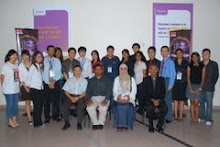Anyone want to add to this? Or got a better explanation?
Today, the face of Jesus is one of the most recognizable on the planet, and yet no one knows what Jesus actually looked like. This paradox of art, history and religion is the focus of a Tuesday, Sept. 25 lecture titled: “Competing Faces of Christ and the Emergence of an Authentic Portrait.” Art historian Herbert Kessler, a visiting professor at Emory, will deliver the free public talk at 5 p.m. in Cannon Chapel. A reception will follow in Brooks Commons.
The gospels and other early Christian writings do not describe the appearance of Jesus, said Kessler, a professor of early Christian and medieval art at Johns Hopkins University, who is currently Candler’s Alonzo L. McDonald Family Chair on the Life and Teachings of Jesus and their Impact.
“In the early period, there was a concerted effort to show Christ with various features as a way to suggest that no one really knew what he looked like,” Kessler said. “He was shown bald and beardless. He was shown with a golden corona of hair. He was shown with short, curly red hair.”
By the end of the sixth century, these various images of Christ had coalesced into the one most popular today: a bearded man with light-brown hair, parted in the middle and flowing to his shoulders.
“The church and the state wanted an identifiable image of Christ that connoted his dual nature — as human and divine,” Kessler said.
For the past two decades, Kessler has focused his career on the ways that Christ appears in art and in “miraculous images,” such as Veronica’s Veil and the Mandylion of Edessa. While at Emory this fall, he is conducting a seminar for students from both Candler and the art history department on how medieval artists depicted the face and body of Christ.
“Medieval artists paid close attention to virtually every part of Christ’s body — his face, his upper torso, his heart, his blood, the wound in his side, his feet — precisely because Christ returned to heaven and it remained for artists to create materialization, as there were no relics,” Kessler said.
Kessler’s time at Emory coincides with the exhibit “Cradle of Christianity: Jewish and Christian Treasures from the Holy Land,” continuing through Oct. 14 at the Carlos Museum.
“I was struck by the opening display, which shows how close Jewish and Christian artwork was at the origins of Christianity,” said Kessler, who visited the exhibit shortly after arriving in Atlanta. “It clearly makes the point that Christian art emerged from a complex pagan and Jewish culture.”


0 comments:
Post a Comment